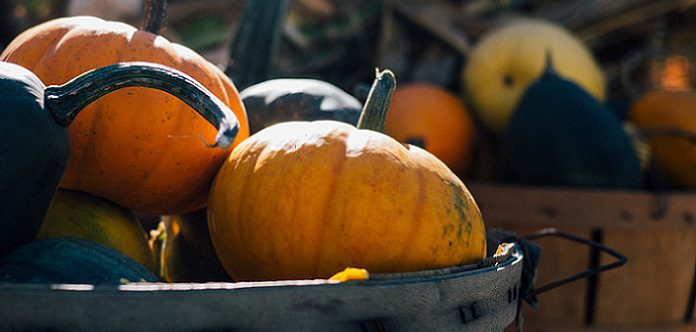In his second post, Pastor Larry Strenge goes deeper into his exploration of the mindset shifts needed to cultivate generosity among those we serve. I’m working on gratitude from last week, and can tell the difference!
Blessings,
Catherine Malotky, Center for Stewardship Leaders
Mindset shifts: Scarcity to sufficiency, money to mission
By Rev. Larry Strenge
Thinking about generosity as something we practice as a discipleship behavior can be a way to shift generosity from a thought to a behavior. As I suggested last week, we can start with practicing gratitude. It’s not hard, but it does take some attention. As leaders, we can start with ourselves!
I see two other mindset shifts that move us toward cultivating God’s expansive generosity.
2. Facilitate a movement from scarcity to sufficiency thinking
Lynn Twist, founder of The Soul of Money Institute, opened my eyes and ears to this mindset shift. A few years back I read (and listened to) her book The Soul of Money. Her diagnosis of “Scarcity: The Great Lie” and her epiphany of “Sufficiency: The Surprising Truth” was eye-opening. She helps us see God’s sufficiency in talks like, “The Soul of Money: Shifting from Scarcity to Abundance” from the Lake Institute on Faith and Giving.
What Lynn Twist reveals: We “breathe” the toxic myths of scarcity our whole lives! We are suffocating through it. We can help people look for “fresh air!” Come, Holy Spirit, come! Facilitate a movement!
If our first mindset shift is “generosity as discipleship,” let’s remember our culture has been making disciples, too. Here are three persistent cultural mantras in this alternate discipleship-making:
- There isn’t enough (It’s a zero-sum game!)
- More is better (Advertising does good work!)
- That’s just the way that it is! (Cynicism! An easy, but harmful, way out.)
Toxic scarcity thinking is ever present.
So, what if God’s Spirit is offering some “fresh air?” (Ephesians 5:18)
What if the Spirit is opening us—or better, filling us up with God’s abundance/sufficiency as our lens on the world? What if rather than taking the easy cynical way out, we instead lived with the eternal hope God models for us in Jesus, our hope confessed in the Apostles’ Creed? There is enough. God’s grace is better. And the promise of redemption and new life in the gospel is a trustworthy promise! Who do you think might want space at our tables?
3. Money follows mission
I smile when I hear congregations wrestle with “What is our mission?” What does Jesus say about our mission? “Go therefore and make disciples of all nations.” (Matthew 28:19) Disciple-making is our first priority, welcoming people to the banquet of grace so they, in turn, can welcome others (remember Matthew’s experience last week). So, what if, at least in part, the discipleship making Jesus had in mind was for the Spirit to set people free to be as generous as God is generous?
When I teach for the Lake Institute and its course, Cultivating Generous Congregations, our goal is to “create a lasting cultural change within a congregation.” How does one accomplish this goal?
One key practice: Tell stories! Tell the stories of the impact peoples’ generosity is making in the congregation (local mission) and through its partners in ministry (e.g. denomination, seminaries, Bible camps, aide organizations, even secular non-profits). We live God’s expansive generosity together! So, tell the stories of the impact their giving is making and invite them to support that passion!
Where do we go from here?
I’ve listed three necessary “mindset shifts” but let me warn you, it won’t be easy. Scarcity thinking is powerful! Yet, cultivating gratitude and generosity will bring joy to God, God’s People, and God’s world!
Think of that banquet table of grace, and Matthew’s new seat at the table among those he knew well (Matthew 9:9-13). How do we imagine and cultivate such a table in our communities of faith, among the people we lead? How do we make our invitation warm and welcoming? How do we embody God’s expansive generosity as leaders and as congregations?
God’s Spirit is calling us to be Jesus’ Body in the world (Ephesians 2:10). Led by the Spirit, modeling God’s generosity through our lives. There’s plenty of space at this table for all of us.
About the Author
Rev. Larry Strenge and his wife, retired ELCA pastor, Rev. Elizabeth Strenge, live near Sartell MN. In July, 2019 Larry began his “re-fire-ment” years after serving congregations and as Director for Evangelical Mission in the ELCA’s SW MN Synod. Larry now coordinates for the ELCA, “Cultivating Generous Congregations (CGC),” a Lake Institute on Faith and Giving generosity course and co-teaches CGC as synods invest in CGC for their synod. He has a limited “generosity coaching practice” with graduates of the Lake Institute’s, Executive Certificate in Religious Fundraising. His contact info is Larry.Strenge@gmail.com.
Photo by Aaron Burden on Unsplash
[[author title=”About the Center”]]



